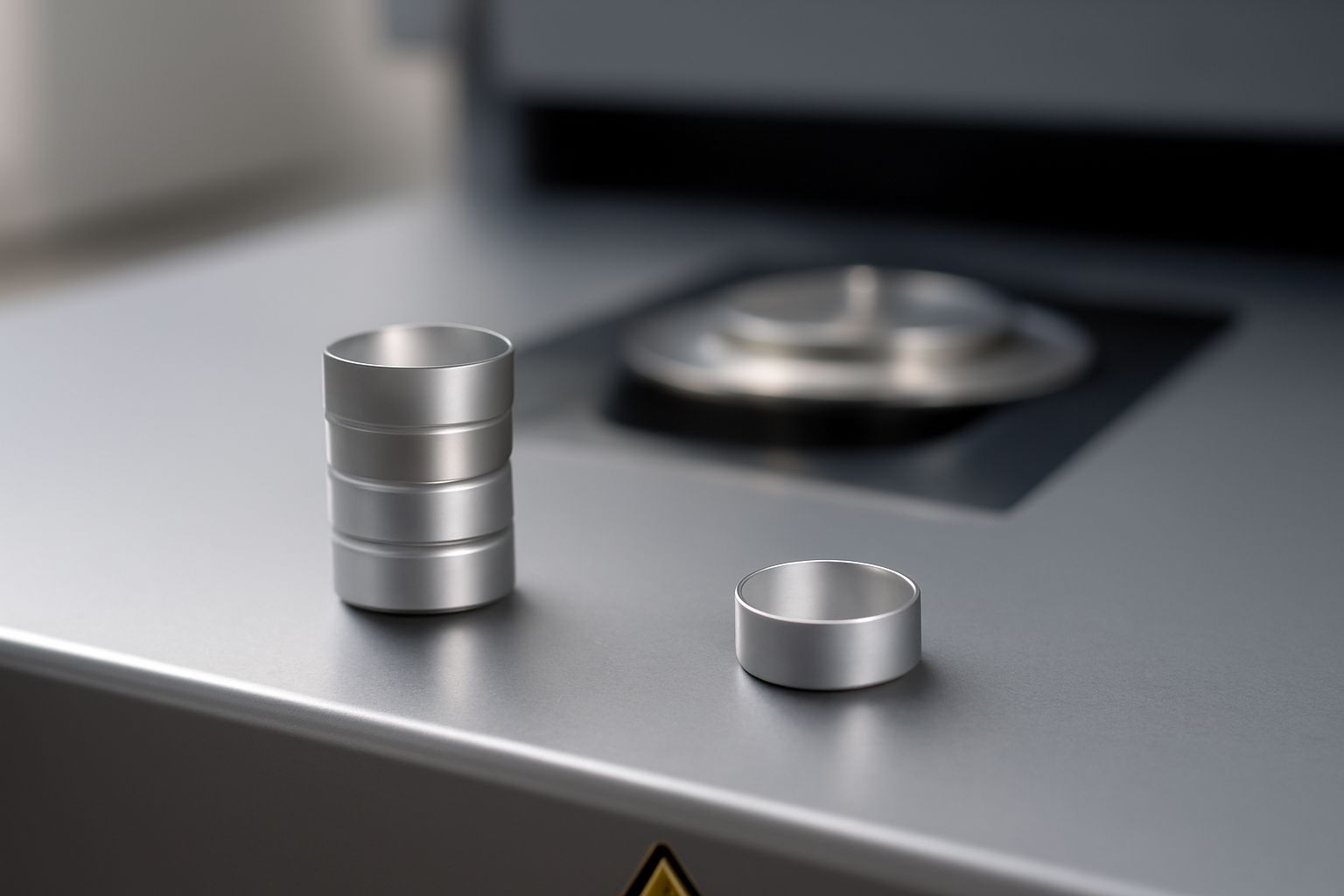Your cart is empty.
shop now
Your cart is empty.
shop now
In material science, using the right crucible during DSC testing can mean the difference between useful data and wasted effort. Testing costs rise fast if you choose wrong.
Aluminum crucibles are crucial for DSC testing in material science research because they deliver fast temperature response, provide reliable results, and keep lab budgets manageable.

Researchers want every DSC run to give clear, repeatable data. The right crucible keeps the process smooth from sample loading to analysis. Reliable sample pans cut down test errors and keep your experiments moving forward.
Good DSC test results depend on heat flow and sample safety. Aluminum offers the best balance of cost, effectiveness, and reliability for labs. Aluminum crucibles provide high thermal conductivity, low cost, and reliable control over thermal response, making them the common choice for routine DSC work.
| Advantage | Why It Matters | Supporting Data |
|---|---|---|
| High Thermal Conductivity | Enables fast heat flow for accurate event detection | 237 W/mK (thermal conductivity) |
| Low Mass | Reduces heat lag, sharpens DSC peaks | Cited in industry-standard DSC textbooks |
| Easy Sealing | Works for volatile samples and prevents leaks | 99% of DSC polymer tests use sealed aluminum pans[source] |
| Low Cost | Allows disposable, clean use each experiment | Much cheaper than platinum or ceramic pans |
From my own work, using aluminum means each polymer or pharmaceutical sample heats quickly and evenly. This is the best way to see glass transitions and melting points. Other materials often slow the test, stretch time, and risk reaction with samples. Aluminum pans seal tight, which keeps moisture and volatiles secure. I always suggest new labs start with aluminum to build test consistency—this builds trust in results and keeps operating costs low.
The effect of crucible material on DSC testing is clear when results vary between samples and runs. Some pans can mask or blur important events.
Choosing the correct crucible material is key for precise heat flow, stable baselines, and avoiding unwanted reactions. Aluminum achieves good accuracy, repeatability, and compatibility for most common laboratory applications.
| Material | Thermal Conductivity (W/mK) | Reaction Risk | Peak Resolution | Common DSC Use |
|---|---|---|---|---|
| Aluminum | 237 | Low for most organic samples | Sharp | Polymers, pharma |
| Platinum | 71 | Lowest risk | Sharp but slower heating | High-temp ceramics |
| Quartz | 1.4 | Low, but poor for high-heat speed | Dull | Acids, alkali |
| Ceramic | 2-33 | Medium | Broad peaks | Batteries, glass |
Whenever I compare pans, high thermal conductivity from aluminum stands out. With tight baselines and sharp peaks, my DSC curves show more detail, especially in polymers and composites. If you need to analyze superalloys or aggressive chemicals, platinum or special ceramics help, but for broad academic and industry use, aluminum remains the best performer. The switch to other materials only works for the rarest applications, as most labs do not need to absorb the extra time or cost. With most samples, aluminum pans solve baseline drift and cut down on sample loss—a big win in busy testing schedules.
Many sectors use DSC as a cornerstone tool to measure material properties, screen new products, and check thermal stability. Labs need reliable, budget-friendly pans.
Material science, polymers, pharmaceuticals, food, and electronics industries all benefit from using aluminum crucibles in DSC testing because of their fast response and accuracy.
| Industry | Main Use | DSC Application Example | Why Aluminum? |
|---|---|---|---|
| Material Science | Structural & physical testing | Measure phase changes | Accurate transitions |
| Polymers | Quality assurance | Glass transition, melting temperature | Best for sensitivity and cost |
| Pharmaceuticals | Stability & purity checks | Drug melting, purity | Low reactivity |
| Food | Product testing | Fat/oil melting, water content | Safe, disposable, fast |
| Electronics | Component reliability | Plastic part stability | Repeatable data |
I often talk with labs in university research and industry. Nearly all choose aluminum pans for standard daily tests. Polymer engineers rely on sharp melting points for new materials. Food science researchers love the easy cleanup and safety. Drug makers need repeatable results and trust the low background noise from aluminum. If you work in electronics, stability during heating is critical—aluminum matches this need in a way few materials do.
Instrument setups in labs can range from classic manual DSC units to modern automated systems. Researchers need sample pans that fit and function well for accurate analysis.
Aluminum crucibles are compatible with most leading DSC instruments, including major global brands. They are produced in many sizes to match equipment from TA Instruments, PerkinElmer, Mettler Toledo, NETZSCH, and others.
| DSC Brand | Compatibility with Aluminum | Notes | Custom Pans Needed? |
|---|---|---|---|
| TA Instruments | Yes | Wide range available | Optional for unique samples |
| Mettler Toledo | Yes | Standard and high-pressure pans | For nonstandard shapes |
| PerkinElmer | Yes | Sealed and vented types | Large or odd samples |
| NETZSCH | Yes | Full range matches equipment | Uncommon needs |
| Hitachi (SEIKO) | Yes | Some need special lids | Rare |
Whenever a lab approaches me about getting started with DSC, I reassure them that almost every major instrument accepts standard aluminum pans. For the rare applications, such as pressure studies or very large samples, I ask for a drawing or find a supplier who can match the style. Most brands, from European to Japanese, include options for aluminum, and the match is nearly always exact. From university projects to factory lines, this means users enjoy compatibility and confidence each time they set up a run.